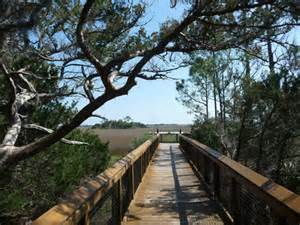
This week’s open threads will highlight more African-Americans firsts. Today’s post will talk about the first free black community.
Fort Mose Historic State Park (originally known as Gracia Real de Santa Teresa de Mosé) is a U.S. National Historic Landmark (designated as such on October 12, 1994), located two miles north of St. Augustine, Florida, on the eastern edge of a marsh. The original site of the fort was uncovered in a 1986 archeological dig. The 24-acre (9.7 ha) site is now a Florida State Park, administered through the Anastasia State Recreation Area. Fort Mose was designated a National Historic Landmark in 1994 and is the “premier site on the Florida Black Heritage Trail.” The fort has also been known as Fort Moosa or Fort Mossa.
Fort Mose (pronounced “Moh-say”) was the first free black settlement legally sanctioned in what would become the United States. The community began when Florida was a Spanish territory. As early as 1687, the Spanish government had begun to offer asylum to slaves from British colonies. In 1693, the Spanish Crown officially proclaimed that runaways would find freedom in Florida, in return for Catholic conversion and a term of four years of service to the Crown. In effect, Spain created a maroon colony as a front-line defense against English attacks from the north. Spain also intended to destabilize the plantation economy of the British colonies by creating a free black community that would serve as a destination for slaves seeking escape and refuge
Incoming freedom seekers were recognized as free, taken into the Spanish militia, and placed into service at the Gracia Real de Santa Teresa de Mosé military fort north of St. Augustine, which was established in 1738 by the Colonial Governor, Manuel de Montiano. The military leader at the fort was a Creole man of African origin, who was baptized as Francisco Menendez by the Spanish Fort Mose. Word of the settlement reached the South Carolina and Georgia to the north, attracting escaping slaves. It helped to set off the Stono Rebellion in September 1739, led by slaves “fresh from Africa” in South Carolina, who were more likely to revolt. During the Stono revolt, several dozen blacks tried unsuccessfully to reach Spanish Florida.
In 1740, British forces, led by James Oglethorpe of Georgia, attacked and destroyed the fort in the Siege of Fort Mose. During the siege, a force consisting of Spanish troops, Indian auxiliaries, and free black militiamen counterattacked Oglethorpe’s troops, forcing them back to Savannah. Because the fort was destroyed, its inhabitants relocated to St. Augustine, where they stayed until Fort Mose was rebuilt in 1752.
After East Florida was ceded to the British in the Peace of Paris of 1763 most of the inhabitants, including many black militia troops, migrated to Cuba with the evacuating Spanish.
A haven for escaped slaves from the British colonies to the north, Fort Mose is considered the “premier site on the Florida Black Heritage Trail.” It is also a precursor site of the Underground Railroad. This was the network in the antebellum years by which slaves escaped to freedom, most often to the North and Canada, but also to the Bahamas and Mexico.

